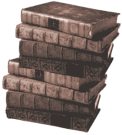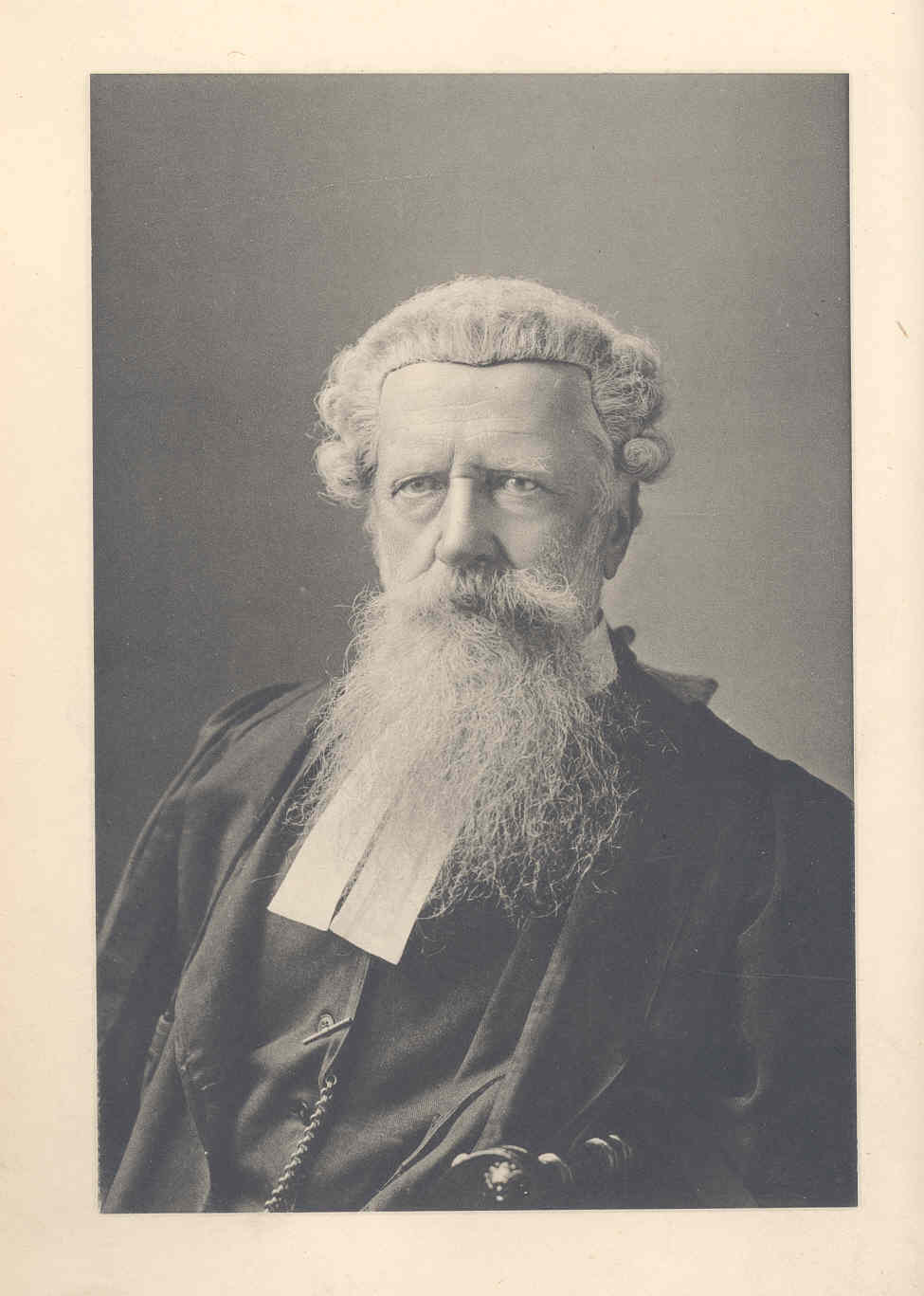
The Feudal History of the County of Derby.
Records of Nottinghamshire and Derbyshire in the 11th, 12th & 13th Centuries (compiled by John Pym Yeatman, Sitwell & Foljambe, 1886)
This five volume work (not all of which is available on the internet) contains details of very ancient records of both Derbyshire and Nottinghamshire covering the period from the 11th - 13th centuries.
![]() (For help in downloading these files, please see important notes and information at the end.)
(For help in downloading these files, please see important notes and information at the end.)
VOLUME ONE (Section One) [Download HERE]
This is a volume of transcriptions and abstracts from rare and ancient documents relating to families and their pedigrees and holdings of land, (they are somewhat like the entries in the Domesday book, but in much more detail), and also includes some lists of named tenants and their rents.
(NOTE, the first three chapters are also available to download as separate books. See below.)
Contents of Volume I. Section One
I. Page 1-88. The Book of Domesday For Derbyshire and Nottingham Town (20 Wm. I.)
II. 89-263. The Pipe Rolls for The Counties of Nottingham and Derby (1131-1307).
VOLUME ONE (Section Two) [Download HERE]
III The Red Book of The Exchequer for The Counties of Nottingham and Derby (c. Henry II.)
Introduction.
Some fee books & feodaries for Nottingham & Derbyshire;
List of tenants holding 40 lb. of land who ought to be knighted but are not (31 July, 6 Edward II);
Book of Aids;
Muster roll of 21 Edward III;
List of knight's fees, etc.(6 Henry VI)
VOLUME TWO (Section Three) [Download HERE]
Charter Rolls;
Estreats of grants;
The Hundred rolls;
The Hundred of Scarsdale & Manor of Chesterfield;
Unreformed Corporation of Chesterfield;
Manor of Chesterfield & Hundred of Scarsdale;
History of the Wake family;
Subsidy Rolls;
Courts of Quarter Sessions;
Parish Church of Chesterfield;
The grammar school
VOLUME TWO (Section Four) [Download HERE]
The Parish Registers of Chesterfield.
The Dissenters' Register.
Monumental Inscription at Chesterfield.
Coat Armour in Chesterfield Church.
A Collection of Chesterfield Charters.
The Pedigrees of Chesterfield.
The Hamlet of Newbold.
The Berewics of Newbold.
The History of the Family of Eyre.
The Manor of Whittington andBrimington.
The Hamlet of Boythorpe.
The Berewic of Tapton.
The Parish of Wingerworth
Index of Persons.
Index of Places.
VOLUME THREE (Section Five) [Text File: Download HERE]
This transcript copyrighted to Robert P Marchington. When opening this document in Word, you may be asked for a password. If so please simply click the "read only" button underneath to continue.
The parish of Brampton.
The manor of Walton, by Brampton.
Callow in Chesterfield.
The parish of Dronfield.
The parish of Holmfield.
The hundred of Peak.
The descendants of the Peverel family.
The lost history of Peak Forest.
VOLUME THREE (Section Six) [Text file: Download HERE]
This transcript copyrighted to Robert P Marchington. When opening this document in Word, you may be asked for a password. If so please simply click the "read only" button underneath to continue.
The Rolls of the Peak
VOLUME FOUR (Section Seven) [Not Available]
Henry Browne of Derby;
Brownes of Derby;
Rectors of Loughborough;
Bechworth Castle;
John Browne, Lord Mayor of London;
Brownes of Snelston;
The Gresleys;
The Montgomeries of Cubley;
The Albinis of the House of St. Saveur;
Fitzherberts;
Fitzalans;
Knights of the Counts of Brittany;
The Peverils --
VOLUME FOUR (Section Eight) [Not Available]
Ashford in the Water;
Griffin pedigrees;
Longsdon Charters;
Court rolls of Ashford;
Ashford parish registers;
Longstones & Berewites of Ashford;
Wrights of Longstone Hall;
Longstone parish registers;
Abney;
Pedigree of Peter Lynford --
VOLUME FIVE (Section Nine) [Download HERE]
Preface
Chapter 1 The Identity of the Gresleys with the Albinis 1
Chapter 2 The Albinis of the Present Day 33
Manor of Willesley, House of St. Sauver of Ivri,
Willesley Charters, Assize Rolls, Ingwardbys,
Abneys of Virginia, Willesley Wills.
Chapter 3 The Abneys of Measham 85
Chapter 4 The Abneys of Leicester and America 93
Chapter 5 Tideswell 117
Descent of the Manor of Tideswell
Chapter 6 The Meverills of Tideswell 155
Chapter 7 The Staffords of Tideswell 198
Volume 5 - Section 10 [Not Available]
Chapter 8 The Foljambe Family 209-275
Chapter 9 The Foljambes of Hassop and Walton 241
Chapter 10 The Custs of Lincolnshire 276-312
Chapter 11 The Steynesbys of Hardwick 313-365
The Fitz Walkelins of Rodburn and Roslaston 346-350
Chapter 12 The Ryes of Whitwell and Gosberchurch 366-392
Chapter 13 Bishop Pursglove 393
Chapter 14 Various Charters Relating to Tideswell 401
Chapter 15 Charters belonging to the Grammar School of Tideswell
relating to its Property 417
Chapter 16 Parish Registers of Tideswell 1635-1683 421
Chapter 17 Subsidy Rolls Tydeswell (Proper) 431
Postscript 436-437
Index of Persons 438-483
The Pipe Rolls of Nottingham & Derbyshire [Download HERE]
"After Domesday, the most valuable series of documents relating to county history is the Pipe Rolls."
The pipe rolls of the Exchequer contain accounts of the royal income, arranged by county, for each financial year. They represent the earliest surviving series of public records, and are essentially continuous from 1155 onwards until the 19th century; one roll from 1129-30 also survives. A copy of each pipe roll - known as the Chancellor's Roll - was also sent to the Chancery. (The unusual name - officially it started out as the 'Great Roll of the Exchequer' - comes from the distinctive way in which the membranes were sewn together, which made them look like pieces of piping when rolled up.)
Domesday Book for the County of Derby [Download HERE]
The Domesday Book is a great land survey from 1086, commissioned by William the Conqueror to assess the extent of the land and resources being owned in England at the time, and the extent of the taxes he could raise. The information collected was recorded by hand in two huge books, in the space of around a year. The Domesday Book provides extensive records of landholders, their tenants, the amount of land they owned, how many people occupied the land (villagers, smallholders, free men, slaves, etc.), the amounts of woodland, meadow, animals, fish and ploughs on the land (if there were any) and other resources, any buildings present (churches, castles, mills, salthouses, etc.), and the whole purpose of the survey - the value of the land and its assets, before the Norman Conquest, after it, and at the time of Domesday.
Lost Certificates or Knight's Fees for the Counties of Nottingham & Derby
From the Copies Preserved in the Red Book of the Exchequer [Download HERE]
The Red Book of the Exchequer is a volume of rare value and authority, although it is admittedly only a copy of certain very ancient records which were kept in the Exchequer, most of which have long since disappeared. One only of the whole class of certificates of knights' fees has escaped destruction. Like Domesday, the Red Book is a purely fiscal document, and its chief value consists in the fact that it gives full particulars of certain records of which only the summaries are given in the Pipe Rolls.
NOTES
Internet Archive Books. Most of the documents here are obtained from the INTERNET ARCHIVE (archive.org) and are downloadable in a number of formats. You may read the books online, and also download them in PDF [and other] formats.
To read the book, simply left-click on the links in the left-hand menu of that page, including "read online". If you prefer to download the entire book, you need to click on the HTTP link. This will take you to a directory listing of ALL the formats. You need to right-click on the PDF file (or whatever you choose) and download it to your own computer.
Google Books. The Google books links will take you to the archive of public domain books stored on the Google site. The procedure is slightly different here. You will be taken to the actual book and may download it from the PDF or "download" link in the top right corner of that page.
My Own Archive. Links that offer you books that I have extracted or collected from other sources can be viewed online as text documents or PDF books, and downloaded in the usual way by right-clicking on the link provided.
PDF Viewer. If you do not have a viewer for the Adobe Acrobat PDF format, you may download one freely here. Please note that many of these file sizes are VERY LARGE and you need a fast internet connection and patience to download them.
About John Pym Yeatman (Of Lincoln’s Inn, Barrister-at-Law, formerly of Emmanuel College, Cambridge, and F.R.H.S., &c.’), In Volume 2, there is a long account of how ‘the author was driven from a valuable practice at the Bar because he refused (as did some few others) to assist a cruel and illegal conspiracy of a wretched clique upon the Midland Circuit’.
In Volume 4, an even longer account of the tribulations suffered by Yeatman in the course of various legal actions: ‘terrible ordeal .. his health had utterly broken down .. robbed by his own solicitor .. shocking degradation of the Bar .. atrocious jobbery of our great carpet-baggers ..’ Yeatman also finds room for an attack on the management of the Public Record Office (‘ridiculous regulations .. incompetent editors .. utterly useless publications .. terrible waste of time’) and the cataloguing of the manuscripts in the British Museum (‘utterly wrong, not to say incoherent’).
In 1863 he sued his wife for divorce on grounds of adultery, and lost the case, the jury finding that ‘the respondent [Mrs Yeatman] had not committed the adultery charged, and that the petitioner [Yeatman] had deserted her without reasonable excuse’. It was the prelude to thirty years of pointless and fruitless litigation.
In 1894 he sued the barristers of the Midland Circuit for damages of £20,000 for omitting his name from the printed list of members of the Birmingham Sessions Bar Mess. He lost, appealed, and lost again. Undeterred, in 1896 he sued the proprietors of the Saturday Review for describing him as ‘one of the cranks of the legal profession’ and for a review of his book The Gentle Shakespere: A Vindication which described it as ‘a nauseous and despicable compound of unctuous sectarian cant, bemuddlement, ignorance, dogmatism and fatuity’. Once more he lost, appealed, and lost again. His one small claim to a niche in legal history was a failed libel suit against Lord Esher which helped to establish the principle of judicial immunity.
The legal historian Patrick Polden sums up Yeatman, accurately enough, as ‘outspoken, quarrelsome, no respecter of rank and reputation and cursed with a self-destructive streak’.






